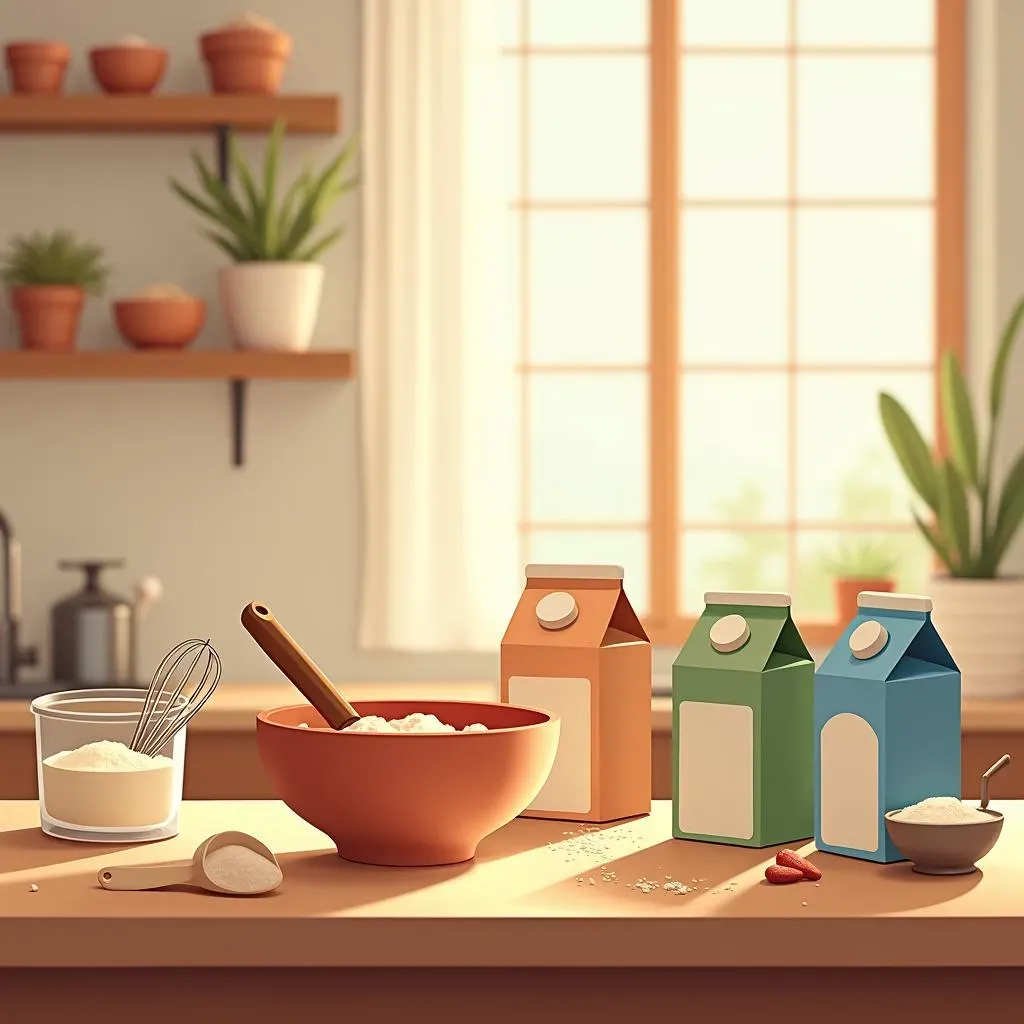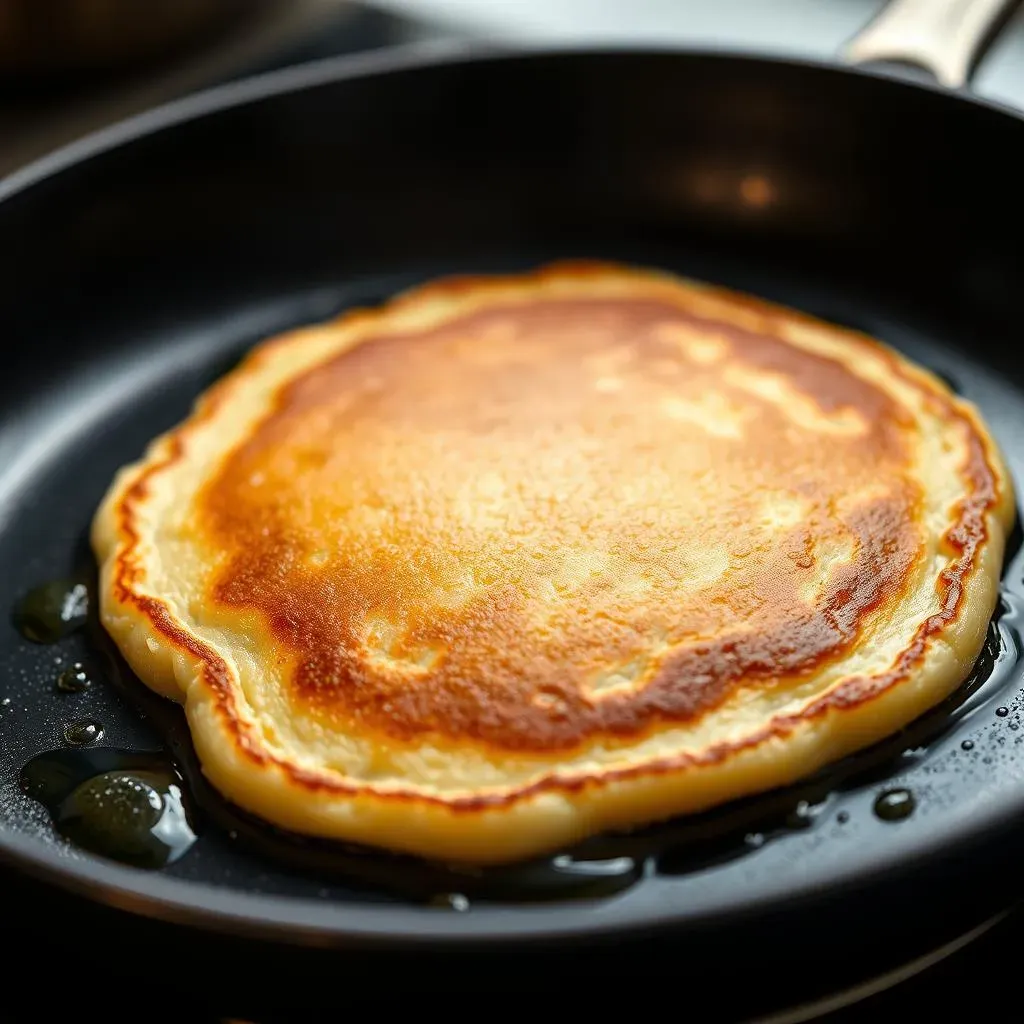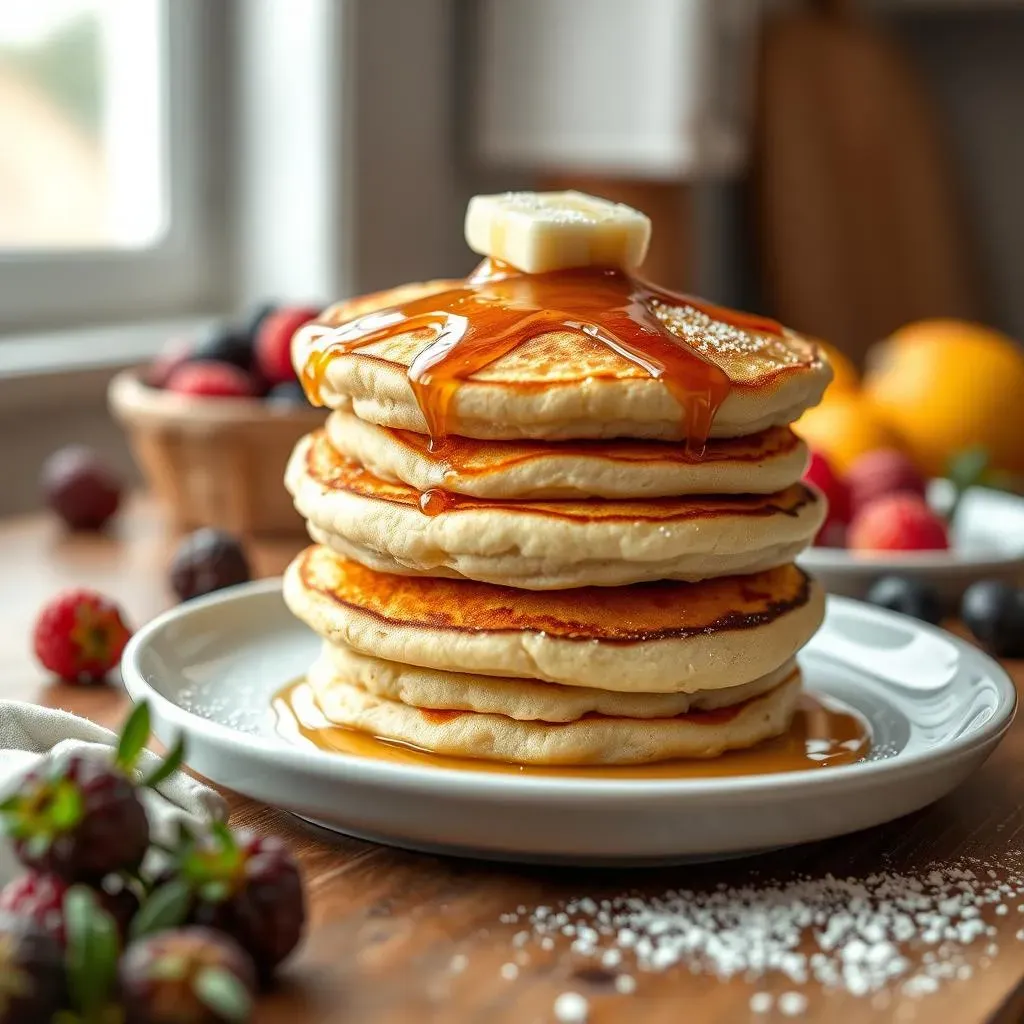Table of Contents
Ready to ditch those flat, disappointing vegan pancakes and create a fluffy, golden-brown masterpiece? This article is your ultimate guide to mastering the art of making perfect vegan pancakes. Forget complicated recipes and frustrating failures; we're diving straight into the essential tips and tricks that will transform your breakfast game. We'll explore the secrets to creating the ideal vegan pancake batter, from choosing the right ingredients to mastering the perfect mixing technique. Then, we’ll walk you through the cooking process, showing you how to achieve those perfectly golden-brown, crispy edges and fluffy interiors. Finally, we’ll tackle common problems, such as flat pancakes or a gummy texture, providing simple solutions to ensure your pancakes are always picture-perfect. Whether you're a seasoned vegan chef or a complete beginner, this comprehensive guide packed with actionable tips for making perfect vegan pancakes will have you flipping delicious stacks in no time. So, grab your whisk, and let's get started on your pancake journey!
Mastering the Vegan Pancake Batter: Ingredients and Techniques

Mastering the Vegan Pancake Batter: Ingredients and Techniques
The Power of Plant-Based Milks
Choosing the right plant-based milk is crucial for achieving that perfect pancake texture. Soy milk, with its higher protein content, often creates a fluffier pancake, similar to using dairy milk. Almond milk, on the other hand, can result in a slightly thinner pancake, which might be preferable for those who prefer a less dense texture. Oat milk provides a subtly sweet flavor and creates a nicely textured pancake. Experiment to find your favorite! For a richer flavor, consider using a oat milk based recipe. Remember, the type of milk you select impacts the final product significantly.
Don't underestimate the importance of freshness! Using a milk that's close to its expiration date can affect the rise of your pancakes. Think of it like this: fresh ingredients are your secret weapon for achieving fluffy, light pancakes. Stale ingredients won't give you the same results.
Plant Milk | Texture | Flavor Profile |
|---|---|---|
Soy Milk | Fluffy | Neutral |
Almond Milk | Thinner | Slightly Nutty |
Oat Milk | Medium | Subtly Sweet |
Flour Power: All-Purpose vs. Alternatives
While all-purpose flour is a classic choice, don't be afraid to explore other options! Whole wheat flour adds a nutty flavor and extra fiber, resulting in a slightly denser but more wholesome pancake. If you're gluten-free, there are plenty of excellent 1:1 gluten-free flour blends available that work beautifully in vegan pancake recipes. Just be sure to follow the recipe's instructions carefully, as different flours will absorb liquids differently. Check out our whole wheat vegan pancake recipe for a healthy twist!
For a truly unique flavor profile, consider using oat flour or even a blend of different flours. The key is to find a balance that delivers both flavor and texture. Remember that experimenting with different flours can be a fun way to find your signature pancake recipe. Don't be afraid to get creative!
- All-purpose flour: Classic choice, versatile.
- Whole wheat flour: Nutty flavor, added fiber.
- Gluten-free blends: Excellent alternatives for those with dietary restrictions.
Leavening Agents: The Secret to Fluffy Pancakes
Baking powder is your best friend when it comes to creating fluffy vegan pancakes. It's the leavening agent that creates those lovely air pockets, resulting in a light and airy texture. Make sure your baking powder is fresh; old baking powder loses its potency, resulting in flat pancakes. A good quality baking powder is essential for achieving the perfect rise. If you're unsure about the freshness of your baking powder, it's always a good idea to replace it.
Some recipes also call for a touch of apple cider vinegar or lemon juice. These ingredients react with the baking soda in the baking powder, helping to create extra lift and a slightly tangy flavor. Don't be afraid to experiment with different combinations of leavening agents to find your perfect balance. A recipe using applesauce can also add extra fluffiness.
Cooking Like a Pro: Achieving Perfectly GoldenBrown Pancakes

Cooking Like a Pro: Achieving Perfectly GoldenBrown Pancakes
The Perfect Pan and Heat
The right pan is key to perfectly cooked vegan pancakes. A non-stick skillet is your best friend, ensuring easy flipping and preventing sticking. A good quality griddle works wonders too, allowing you to cook multiple pancakes simultaneously. For even cooking, medium heat is your sweet spot. Too high, and your pancakes will burn on the outside before cooking through; too low, and they'll be soggy and pale.
Think of it like this: your pan is the stage, and your pancakes are the stars. You want a stage that's just the right temperature to showcase your culinary creations. A little oil or vegan butter will help prevent sticking, but don't overdo it! A light coating is sufficient. For more tips on achieving pancake perfection, check out this guide to perfect vegan pancakes.
- Non-stick skillet: Easy flipping, prevents sticking.
- Griddle: Cooks multiple pancakes at once.
- Medium heat: Prevents burning and ensures even cooking.
Mastering the Flip: The Art of Even Cooking
Flipping pancakes is an art form, a delicate dance between timing and technique. You'll know it's time to flip when bubbles start to form on the surface of the pancake and the edges appear set. Use a thin spatula to gently lift and flip, ensuring the pancake cooks evenly on both sides. Don't press down too hard; let the heat do its work.
Patience is a virtue when it comes to flipping pancakes. Rushing the process can lead to uneven cooking and torn pancakes. Take your time, and enjoy the process. A perfectly flipped pancake is a thing of beauty. If you're having trouble with flat pancakes, you might want to check out our article on why your vegan pancakes are flat for some troubleshooting tips.
Sign | Action |
|---|---|
Bubbles forming on surface | Ready to flip |
Edges appear set | Time to flip |
Golden brown color | Pancake is cooked |
Troubleshooting Common Vegan Pancake Problems: Fixing Flat, Dense, or Soggy Pancakes

Troubleshooting Common Vegan Pancake Problems: Fixing Flat, Dense, or Soggy Pancakes
Flat Pancakes: The Case of the Missing Lift
Flat pancakes? The culprit is often stale baking powder or overmixing the batter. Baking powder is your friend; it's what gives your pancakes their fluffy texture. Make sure yours is fresh! If it's old, it won't create the necessary lift. Overmixing develops gluten, making your pancakes tough and dense. Gently fold the ingredients together until just combined. A few lumps are okay; a smooth batter isn't necessary. Remember, a light hand is key! For more tips, check out our guide on common vegan pancake mistakes.
Another common reason for flat pancakes is not letting the batter rest. Allowing the batter to rest for 5-10 minutes gives the baking powder time to activate, creating more air bubbles and a fluffier texture. Think of it as giving your pancakes a head start on their rise. This simple step can significantly improve the results.
- Check baking powder freshness.
- Avoid overmixing the batter.
- Let the batter rest for 5-10 minutes.
Dense Pancakes: Too Much of a Good Thing
Dense pancakes often point to using too much flour or not enough liquid. Think of the batter as a delicate balance between wet and dry ingredients. Too much flour, and it becomes heavy and compact. Not enough liquid, and it lacks the necessary moisture for a light and airy texture. Always measure your ingredients accurately, using a kitchen scale for the most precise results. A slightly thinner batter is often better than a thick one.
Another factor contributing to dense pancakes is using a heavy flour, like whole wheat. While whole wheat flour adds flavor and nutrition, it also creates a denser pancake. If you're using a heavy flour, you might need to adjust the liquid ratio slightly to compensate. Experiment to find the perfect balance for your chosen flour. For a lighter option, try using a blend of all-purpose and whole wheat flour. Want a different flavor? Try our banana vegan pancake recipe!
Problem | Possible Cause | Solution |
|---|---|---|
Dense Pancakes | Too much flour | Reduce flour, add more liquid |
Dense Pancakes | Heavy flour | Use lighter flour or adjust liquid |
Soggy Pancakes: The Case of the Undercooked Center
Soggy pancakes are usually the result of cooking them over too low a heat or not cooking them long enough. Low heat prevents the inside of the pancake from setting properly, resulting in a gummy texture. Use medium heat for even cooking, ensuring the pancake cooks through without burning. Remember, patience is key. Let each side cook until it's golden brown and cooked through before flipping.
Another contributing factor can be a batter that's too thin. If your batter is too thin, it will spread out too much in the pan, preventing it from cooking evenly and resulting in a soggy center. Adjust the liquid in your batter to achieve a consistency that's thick enough to hold its shape but not so thick that it's difficult to pour. If you're looking for a simple recipe, our easy vegan pancake recipe is a great starting point!